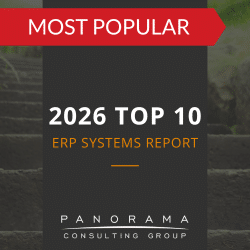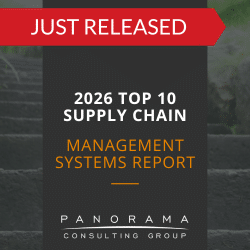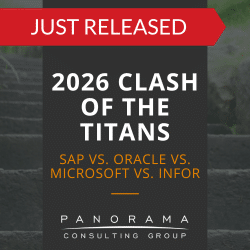You recently implemented new enterprise software at your professional services firm, but you’re still struggling to address certain operational challenges. Where do you go from here?
Well, first you should ask whether your project was properly planned and executed from the very beginning. Many professional services organizations rush through ERP implementations and find that their operational pain points remain. This is often considered to be an ERP failure.
Today, we’re outlining the professional services industry challenges that poorly-planned software projects fail to address. If you’re still struggling with these challenges after go-live, take it as a sign that you might need project recovery.
Read on for expert tips on overcoming operational challenges by revisiting your project plan and finding ways to ensure business and technology alignment.
4 Professional Services Industry Challenges That May Still Be Plaguing You
There are certain challenges and pain points that are more likely to afflict certain industry niches. In the professional services sector, many of these center on administrative issues that impede productivity, affect customer relationships, and shrink your bottom line.
When you invest time, money, and resources in a major software implementation, you naturally want to solve such issues, but of course, software projects don’t always turn out like you expect.
Let’s look at a few of the most common challenges that can persist years after go-live.
1. Financial Errors
Many of the problems that plague professional services firms are related to finance. One wrong decision can put you in the red, and that’s a risky place to be, especially if you’re just starting out.
To get a handle on your finances, you must prioritize effective cash flow management. Even the smallest error, like having to re-issue an invoice, can throw your client services team off track.
Did you implement modern cloud-based financial software? Is it effectively automating your invoicing process and other aspects of your financial operations?
If not, it’s time to go back to the drawing board and re-evaluate your technology, your processes, and your organizational change management approach.
The Top Professional Services Software Systems Report
Our experts have compiled a list of the top professional services software, detailing the key differentiators of these PSA point solutions and ERP systems.
2. Lack of Understanding of Customer Needs
To succeed in the professional services space, you must have an in-depth understanding of what your clients want.
Increasingly, clients are looking for firms that are as transparent as possible, with information readily available at every turn. If you can’t provide this level of transparency, it can be difficult to secure client trust and build long-term loyalty.
Did you prioritize data analysis and tracking technologies during your ERP implementation? Is your software sharing real-time updates that facilitate client relationships?
If not, consider whether you implemented the right technology. You may want to consider tools, such as order management systems, that can provide visibility into key status updates, so clients know where their projects stand.
3. Outdated Legacy Equipment
The professional services industry might be inching toward digitization, but much of the work is still manual – or it’s being conducted on outdated software and stored in clunky spreadsheets. These tools impede productivity, frustrating both employees and clients.
Did you replace all your legacy systems, or do some remain?
Consider replacing all your legacy systems so you can optimize collaboration and visibility. With more advanced technology, you can automate inefficient manual processes and break down operational siloes.
4. Attracting New Clients
For companies in this industry, it can be challenging to retain existing clients while also attracting new ones. Relying on a few solid existing customers could be a recipe for disaster, especially in a shaky post-pandemic economy.
Building your client base keeps your teams agile and allows you to stay responsive to market demands.
Is your new enterprise software helping you identify new opportunities and determine how to act on them?
If not, consider if your software is specifically designed for professional services companies. With professional services software, you can enjoy complete visibility across your enterprise. This means you can track important metrics such as:
- Customer satisfaction
- Performance analytics
- Project implementation and delivery
The Importance of Business-IT Alignment
When a firm implements the right business software, the challenges above become easier to tackle.
However, there’s a chance that even the right technology could fail you. This is usually due to a lack of business-IT alignment.
When assessing your project during post go-live, consider if your IT team had a vision for the implementation that wasn’t fully aligned with your long-term business goals. This often happens when the focus is strictly on technology and there’s less of an emphasis on the people and process aspects of the project.
During project recovery, focus on ensuring strategic alignment. There are several areas where IT and business stakeholders need to be fully aligned. These include but are not limited to:
- The nature of the project
- The role of the IT team
- The IT strategy
- How you will define success
- The project goals
Achieving Enterprise Software Success in the Professional Services Industry
These are some of the professional services industry challenges that should begin dissipating throughout the months and years following go-live.
Are you making progress in addressing financial reporting and customer acquisition challenges, or is your benefits realization timeline longer than you expected?
Our ERP project recovery team can assess your implementation, looking for issues like a lack of organizational alignment. Contact us below for a free consultation.














